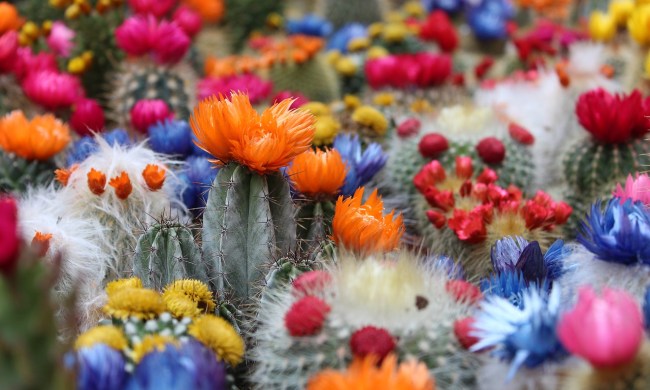Philodendrons are incredibly popular houseplants, known for their beauty as well as their resilience. They come in many interesting forms, from the stunning pink princess philodendron to the large-leafed Philodendron gloriosum. Philodendron micans is the latest in a long line of wonderful philodendron species, but how do you know if it’s a good fit for your home? In this guide to Philodendron micans, we’ll explain what sets this lovely plant apart and how you can keep yours happy and healthy.
What makes Philodendron micans so popular?

These lovely plants have all the benefits of a typical philodendron plant. They’re hardy and easy to care for, easy to propagate, and beautiful to look at. However, it’s the qualities that differ from other philodendrons that have helped make this plant so beloved.
The leaves of the Philodendron micans are soft to the touch, with a texture similar to velvet (although the sap is a skin irritant, so take care when touching them). They are also fairly angular, with a more narrow shape than some types of philodendrons. When this vining plant climbs upward, the leaves tend to lie flat against the vine, creating a lovely display.
Philodendron micans are not variegated, but they aren’t entirely one color, either! Young leaves have a rusty tint to them, which can appear more red or even a bit purple in some light. This darkens to a rich, emerald green as the leaf grows. So a single plant may have leaves with multiple shades and colors all growing at once, creating a gorgeous and unique display.
Planting Philodendron micans

Choose a container with plenty of drainage holes, and use a rich, well-draining, slightly acidic potting soil. If you only have regular potting soil, you can add compost, sphagnum moss, coco coir, or perlite to the soil to improve the drainage and increase the acidity. When it comes to container style, you have a few options. Hanging baskets are a great fit, but if you don’t have anywhere to hang one, then a standing pot will do just as well.
You can add a moss pole or other climbing structure to the center of the pot for your vining Philodendron micans to climb, or let the vines trail across your desk or window sill. Moss poles will create a lovely display and keep the vines out of the way, which is handy if you want your Philodendron micans to be a desk plant. However, your plant doesn’t need a moss pole, and the vines will happily grow across your table or windowsill. Just be sure to keep them away from anything tall, as they will climb anything they can reach!
No matter the type of container it’s in, position your Philodendron micans in bright, indirect light for the best results. These hardy plants can tolerate some shade, but you may notice slower growth and less vibrant leaf color. Direct light can burn their soft leaves, causing the edges to turn brown and dry up. Too much direct light can also bring out the red undertones in the leaves, causing them to revert to their rusty early color or even turn brighter red. While this can be beautiful, it’s a sign of sun stress.
Philodendron micans care

Water your Philodendron micans whenever the top few inches of soil is dry. If it is still damp, wait another day or two to water. While these plants enjoy regular water, they can still develop problems if overwatered. Additionally, take care not to get its leaves wet when you water it. Wet leaves can cause problems (such as fungal infections) for most plants, but plants with fuzzy or soft leaves are particularly sensitive to this. If a little splashes onto them every once in a while, don’t panic, but try to avoid regularly wetting them.
During spring and summer, you can feed your Philodendron micans with any balanced houseplant fertilizer. This will help encourage growth and keep your philodendron looking perky, but don’t panic if you miss a few doses. Despite their delicate appearance, these philodendrons are just as resilient as other philodendrons. They’ll bounce back from most types of neglect.
If one Philodendron micans plant isn’t enough, then you’ll be happy to know that they are easy to propagate! Simply choose a healthy stem that’s a few inches long with at least one leaf and use sharp, clean scissors, shears, or a knife to cut it off the rest of the plant. Place the cut end of the stem in fresh soil or clean water, and wait for roots to grow. We recommend wearing gloves when doing this, however. While the surface of the leaves is soft, the sap inside the plant is a skin irritant.
Philodendron micans is a gorgeous houseplant, and now that you know how to care for it, you’re ready to bring one home with you. You’ll love seeing this lovely plant grow and shift colors, and the soft texture is delightful as well. Just be careful not to touch the sap, and wash your hands after handling it to avoid skin irritation.




